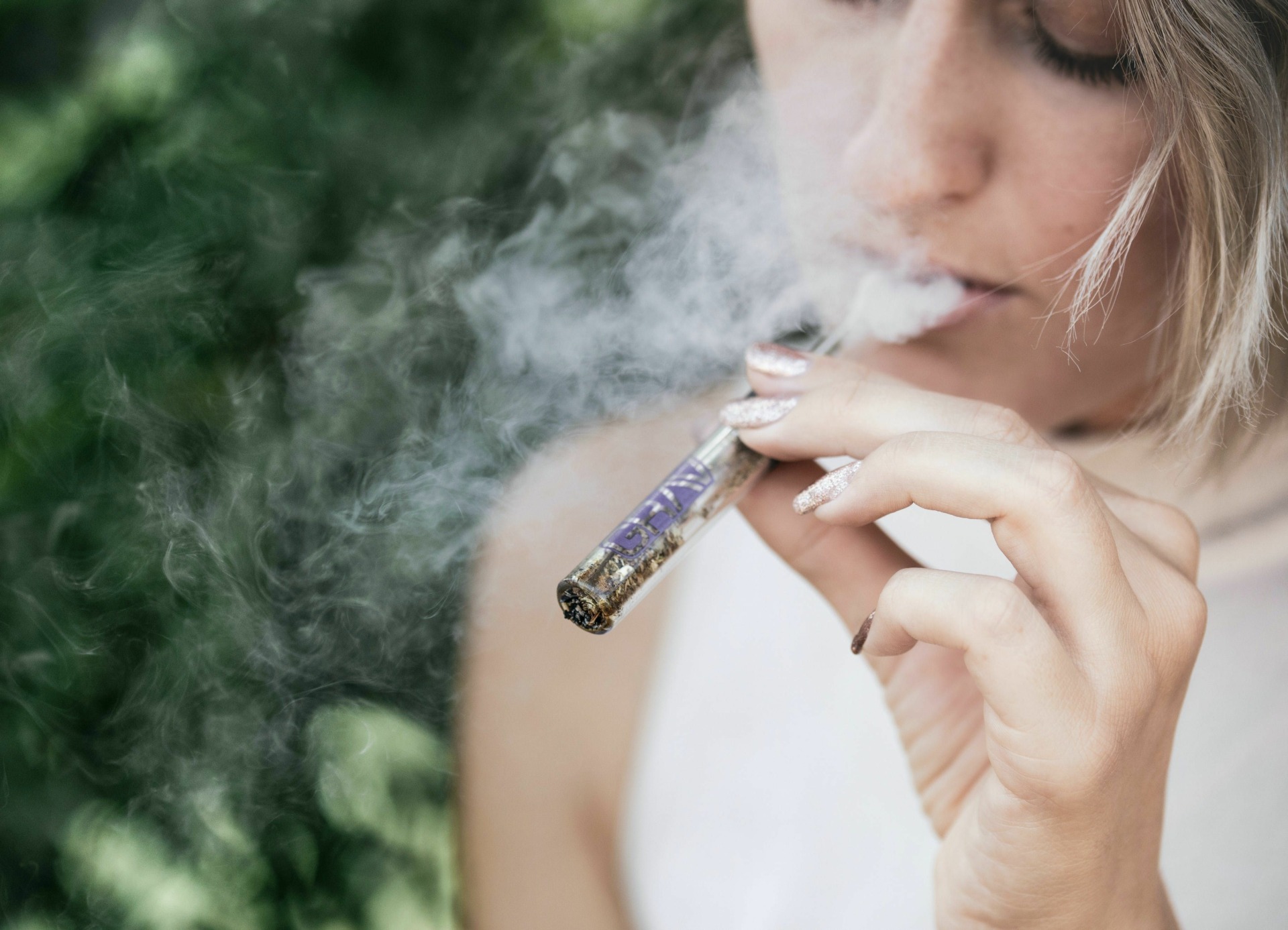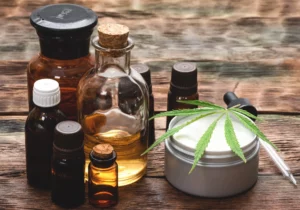If you smoke or vape cannabis, you can feel the effects almost immediately. But you’ve probably noticed that nibbling on a cannabis-infused cookie can take much longer to kick in.
The effectiveness of cannabis can vary greatly depending on how it’s consumed. So, getting the right amount of marijuana for the effect you’re looking for can be tricky. Differences in the way cannabis is consumed can make a big difference in its bioavailability—in other words, how quickly and completely cannabinoids like tetrahydrocannabinol (THC) and cannabidiol (CBD) become available to the body for their desired effects.
FOLLOW US ON FACEBOOK & INSTAGRAM
Bioavailability Is the Key to Cannabis Benefits
The term bioavailability was coined in the pharmaceutical industry to describe the rate and speed at which a given drug is taken up by the body and has its desired effects.
Since then, people use it in connection with consumed substances, even foods. But a given substance doesn’t automatically have its full effect on the body once it’s consumed. Many factors can affect how long it takes for the substance to kick in. And whether that effect is weaker or stronger than it should be—or just right.
Various factors can affect the bioavailability of a substance, including cannabis, such as a person’s:
- Age
- Weight
- Overall health
Then there are circumstantial factors, such as whether:
- The substance is taken with or without food
- It’s consumed early or late in the day
- The person is also taking compatible or incompatible foods and drugs
One of the most important factors affecting a substance’s bioavailability though, is the way it’s consumed. And this is an extra important consideration when you’re taking cannabis, since there are so many different consumption methods.
Smoking may be the most familiar way to consume cannabis, but other consumption methods include:
Each of these methods brings essential cannabinoids such as THC and CBD into the bloodstream and eventually to the brain. But they take different routes to get there, and this can affect how much THC or CBD becomes available for use—and how quickly the effects can be felt.
Variations in Bioavailability Can Make Accurate Cannabis Dosing Difficult
Because so many factors can affect the bioavailability of cannabinoids, it can be hard to get the right amount for your purposes. For example, it’s important to consume some kind of fat, such as butter or coconut oil, with cannabis edibles, because cannabis is fat soluble. This means fat molecules can better transport cannabinoids into the bloodstream.
Without fat, the body isn’t able to fully take up the cannabis, so the plant’s effects could be much weaker than if it had been eaten with a bit of fat or oil. And if a person who usually vapes cannabis for a medical condition switches to edibles, they may be frustrated by the lag time in feeling its effects and be tempted to take more.
Given the many different cannabis strains and their varying potency, and the multitude of other variables in each person’s life, it can be difficult to calculate the right dose of cannabis for a particular health condition.
In general, however, knowing a little about how cannabis is processed and used by the body can help you decide what form—and what amount—can work best for you.
Here’s a rundown of the many methods of using cannabis and what’s known about the bioavailability of each.
Smoking & Vaping Marijuana Bring Cannabinoids Directly Into the Lungs & Then the Bloodstream
Smoking and vaping cannabis are among the fastest ways to feel the effects of THC and CBD. This is because inhaling cannabis brings cannabinoid molecules directly into the small capillaries in the lungs, and from there directly into the bloodstream. Once in the bloodstream, they can travel directly to the brain and other parts of the body that contain cannabinoid receptors for an effect that can be felt within minutes.
The kind of cannabis strain or the way it’s delivered can also influence the effects of inhaled cannabis. Smoking involves combustion—burning the leaves and buds of the cannabis plant itself. But although vaping and dabbing avoid the toxins produced by combustion, they involve more concentrated forms of cannabis such as oils and dabs.
In general, inhaled cannabis has a typical bioavailability of up to 56%. What this means is that 56% of the active ingredients become available to the body.
Cannabinoids From Marijuana Edibles Don’t Make it to the Bloodstream
Cannabis edibles are more popular than ever, and new infused foods are appearing on the market all the time. But while getting your cannabis with candies or cookies can be tasty and fun, this can be among the least effective ways to absorb a significant amount of cannabinoids.
That’s because of a phenomenon called the first-pass metabolism. Before cannabinoids can get into the bloodstream, they must take a “first pass” through the digestive system, which strips out many of the available cannabinoids and accounts for the lag time in feeling their effects.
Like many other substances, the liver processes cannabinoids, where a select set of enzymes converts them to a usable form. From there, fat molecules can help transport the cannabinoids into the bloodstream and on to the brain and other tissues.
But a large percentage of the cannabis in an edible is destroyed in the journey, or simply excreted. This makes the average bioavailability of marijuana edibles hover between 4–12%.
RELATED: COOKING WITH CANNABIS
Marijuana Sublinguals, Lozenges & Drinks Take Effect Quickly via the Mouth’s Mucous Membranes
Although sublingual drops and tinctures, lozenges and cannabis-infused drinks could technically be considered edibles, these forms of cannabis are somewhat different. They take a very different—and much faster—route for delivering cannabinoids to the bloodstream: the mucous membranes of the mouth.
Because areas such as the base of the tongue, the cheek and the roof of the mouth are highly permeable, cannabis products that come directly in contact with them don’t have to pass through the digestive system and liver in order to become bioavailable.
The most permeable area of the mouth is under the tongue, which is why sublingual cannabis preparations are among the fastest and most effective ways to get a consistent dose of cannabinoids. After that, lozenges held against the cheek or roof of the mouth can also deliver cannabis quickly and consistently.
Overall, oral cannabis preparations have a typical bioavailability of 50–75%.
Cannabis Transdermal Patches Provide Long-Lasting Relief
Transdermal patches can deliver consistent therapeutic doses of cannabinoids while avoiding the first pass slowdown of the digestive system. Though there isn’t much research on the bioavailability of transdermals, patches can deliver a consistent dose of cannabinoids for long periods of time, usually between eight and 12 hours.
Unlike many other kinds of medications, cannabis comes in a variety of forms, each with its own way of providing its effects. Knowing how cannabinoids like THC and CBD work with your body’s processes can help you find the cannabis consumption method that works best for you.
Photo credit: Grav
If you’re new to cannabis and want to learn more, take a look at our Cannabis 101 index of articles. HelloMD can help you get your medical marijuana recommendation; it’s easy, private and 100% online.






